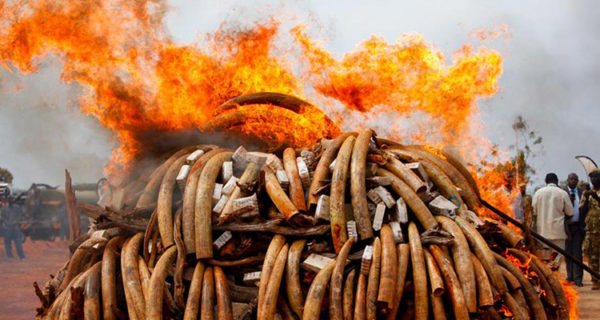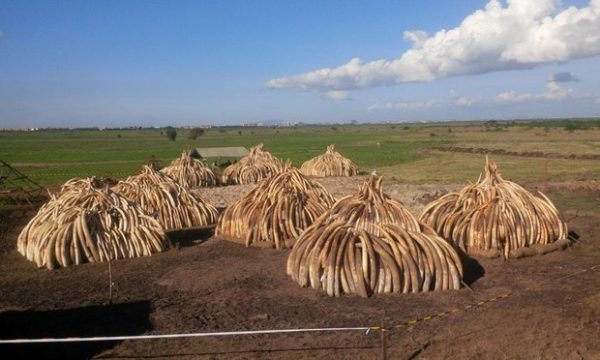
On April 30, 2016, Kenya proved to the rest of the world that it is serious in the fight against the illegal trade of wildlife goods.
In the presence of the country’s president, Uhuru Kenyatta – as well as wildlife conservation groups, the press, and other national and international dignitaries – about 150 tons of ivory, primarily from elephants, was set ablaze at a national park in the capital, Nairobi. It was a burning ceremony witnessed by those present.
The burning ceremony went viral worldwide, with international wildlife conservation groups welcoming the initiative.
The ivory was seized by the country’s law enforcement agencies, at various locations in the country. Poachers had brutally killed the elephants, and had removed the tusks for buyers. The buyers were attempting to traffic the goods out of the country, but luck eluded them and the security apparatus arrested them. It is estimated that the ivory that was set ablaze was worth about 172 million United States Dollars.
The burning ceremony did not contain the entirety of the ivory that was seized by law enforcement agencies. The government said the country had kept 7 tons for research purposes. About 25 tons are also stuck in litigation or are being held as evidence in pending cases at the law court against the traffickers and poachers.
But after the burning ceremony, some local commentators were quick to criticize the ceremony. They claimed that publicly burning such goods will encourage poaching. Some critics even went as far as saying that burning the ivory amounts to burning money, and questioned why the government did not sell it and use the profits to hire and train wildlife militia or aid local development.
The critics made lots of sweeping statements about the burning ceremony, failing to provide, in most cases, logical reasoning for their assertions.
However, in response to these local critics, international wildlife conservation groups have hit back. In a recent article published on the Plaid Zebra, author Caroline Rolf has chronicled why burning the ivory at the Nairobi National Park was the right thing to do.
First, the article states that if the Kenyan government had sold the ivory, it will mean the government supports the black market trade of the goods. The government cannot engage in something it considers illegal.
Also, the ivory burning is about saving the innocent lives of elephants. It is part of a larger initiative to abolish the demand for ivory, and bring back value to the living creatures. The animals have economic value, which is sustainable. If they are alive, tourists will travel long distances to see them.
According to statistics, leisure tourism generates almost $200 million a year for Kenya. In fact, tourism in Kenya is the second largest source of foreign exchange revenue after agriculture. It also employs over 500,000 people in the country. Therefore, if elephants and their natural ecosystems are maintained, tourism and its benefits will be sustainable for the country.
Another argument to counter critics of the burning ceremony, is that the burning ceremony showed the countries that receive the ivory goods that Kenya is very determined to protect its endangered species. Kenya is set to host the next wildlife conservation summit this year. International conservation experts will be very pleased with the country for taking such a giant step towards ending the illegal trade of all endangered species products.
Currently, it is estimated that there are less than 500,000 African elephants left in the wild. This means that the animals could become extinct on the continent if radical measures are not implemented by various governments to stop illegal poaching practices.
With the above points, conservation groups believe the Kenyan government did the right thing by organizing the public burning ceremony.
You want to support Anonymous Independent & Investigative News? Please, follow us on Twitter: Follow @AnonymousNewsHQ
This Article (Kenya Burns 150 Tons Of Ivory Worth $172 Million, Wildlife Conservation Groups Say It Was The Right Thing To Do) is free and open source. You have permission to republish this article under a Creative Commons license with attribution to the author and AnonHQ.com









I can understand that people weren’t to happy about burning the ivory, but it was more meant to symbolize and show that they will not tolerate poaching. It would be very hypocritical for them to sell the ivory. They would be supporting the very thing that they were fighting against. I can see the points from both sides but they were right for burning it.